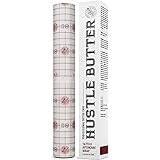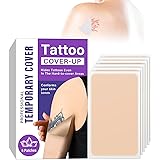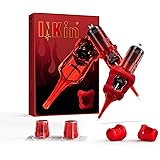We’ve all been there, standing in front of the mirror, a temporary tattoo sticker in hand, imagining the perfect placement. The anticipation of adorning our skin with a new, ephemeral design is palpable, yet a subtle apprehension often arises: will it apply flawlessly? Will it last as long as intended? The accompanying video provides a concise visual guide to the mechanics of tattoo sticker application and removal, offering a foundational understanding.
However, achieving an optimal application of any temporary tattoo involves more than just following steps; it necessitates an understanding of the underlying principles of skin adhesion and preparation. This detailed guide expands upon those fundamental instructions, delving into the nuanced considerations that can significantly impact the aesthetic outcome and longevity of your chosen body art.
Optimizing Your Temporary Tattoo Application: Beyond the Basics
The successful adherence of a tattoo sticker is predicated upon meticulous skin preparation and a precise application technique. While the video outlines the essential actions, a deeper exploration of each step can enhance results considerably.
Strategic Placement and Dermatological Considerations
Selecting the ideal location for your temporary body art is paramount. Areas of the skin subjected to frequent flexion or friction, such as inner elbows or wrists, often exhibit compromised longevity due to constant movement and contact with clothing.
Conversely, flatter, less mobile areas, like the forearm, shoulder blade, or calf, tend to facilitate superior adhesion and extended wear. Consideration should also be given to areas with minimal hair growth, as excessive hair can interfere with direct adhesive contact and result in a patchy transfer.
The Imperative of Skin Preparation: A Scientific Perspective
As demonstrated in the video, a clean surface is non-negotiable for effective temporary tattoo application. Wiping the chosen area with cotton and alcohol serves a dual purpose: it cleanses the skin of surface dirt and, more critically, degreases it.
Skin naturally produces sebum, an oily secretion that can create a barrier between the tattoo’s adhesive and the epidermal layer, thereby inhibiting proper bonding. Isopropyl alcohol acts as an effective solvent, dissolving these lipid residues and ensuring a pristine, receptive surface for the tattoo sticker.
Mastering the Adhesion Process for Enhanced Longevity
The actual transfer of the tattoo from its backing to the skin is a delicate process, demanding both precision and patience. The details often overlooked can make a significant difference.
Precise Positioning and Eliminating Imperfections
Once the clear top sheet is removed, the adhesive side of the tattoo sticker is exposed, rendering it susceptible to dust or accidental contact. Carefully positioning the design face down onto the prepared skin requires a steady hand and a clear visualization of the final placement.
It is important to ensure the entire design is in firm, even contact with the skin, as any air pockets or wrinkles in the transfer paper can lead to incomplete or distorted images upon removal.
The Hydration and Pressure Nexus in Tattoo Transfer
The application of a wet cloth, sponge, or paper towel initiates the crucial hydration phase of the transfer process. The water permeates the paper backing, allowing the water-soluble adhesive on the temporary tattoo to activate and bond with the skin.
Consistent, firm pressure applied for approximately 20 seconds is vital. This pressure ensures intimate contact between the adhesive layer and the epidermis, facilitating a complete and uniform transfer of the ink pigment. Insufficient pressure, conversely, may result in a partial or faded image.
Extending the Lifespan of Your Temporary Body Art
Once successfully applied, the longevity of your tattoo sticker can be further extended through appropriate aftercare. While not explicitly detailed in the video, these practices are integral to maximizing wear time.
Minimizing exposure to abrasive friction, such as that from tight clothing or vigorous scrubbing, is crucial. Additionally, direct contact with oil-based products, including certain sunscreens, lotions, and soaps, should be avoided as these substances can degrade the adhesive bond prematurely.
Safe and Seamless Removal: Dissolving the Bond Effectively
The removal process, while seemingly straightforward, benefits from an understanding of how the adhesives are designed to release. The video correctly identifies baby oil or alcohol as effective solvents.
The Chemical Efficacy of Removal Agents
Both baby oil (typically mineral oil) and isopropyl alcohol are lipophilic substances, meaning they effectively dissolve fats and oils. The adhesive used in most temporary tattoo stickers is formulated to be soluble in these agents, allowing for a gentle dissolution of the bond between the tattoo and the skin.
Soaking the tattoo for 20 seconds allows sufficient time for the solvent to penetrate and weaken the adhesive structure, making subsequent wiping much easier and less irritating to the skin.
Gentle Eradication and Skin Preservation
After the appropriate soaking period, the tattoo should be wiped away gently. Aggressive scrubbing can cause skin redness or irritation, particularly on sensitive areas.
A soft cloth or cotton pad, combined with continuous application of the chosen solvent, will facilitate a clean removal, leaving the skin free of residue and ready for its next tattoo sticker application.











